Sointula, British Columbia
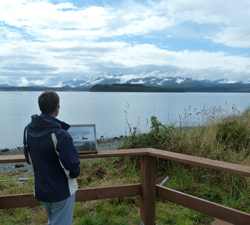
Story & Photos by Duart Snow
Named ‘place of harmony’ by its Finnish founders, this historic village is a beguiling destination just outside the Broughtons.
On BC’s long and storied coastline, the ambitious cruiser’s bucket list is sure to contain literally hundreds of high-profile “don’t-miss” spots. But over the years, one destination popped up regularly in our conversations with cruisers and landlubbers alike, people whose opinions we trusted. They spoke of this place reverently and urged us not to miss it.
The place is Sointula, the village on Malcolm Island that was founded by Finnish pioneers in 1901 as a utopian socialist community. It became our turn-around point on our Broughtons cruise last summer – and our visit most definitely did not disappoint.
Our arrival could have been better, though. As we rounded the east end of Malcolm Island from Queen Charlotte Strait into Cormorant Channel, a strong westerly wind and rain chased us off the bridge and brought dusk down early. In fading visibility, we slipped through Haddington Passage (leaving the extensive but well-marked Haddington Reefs to starboard) and felt our way to the public harbour near the head of Rough Bay on Malcolm’s southern shore.
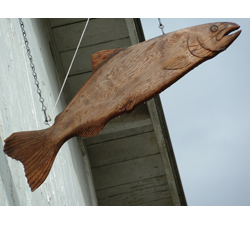 Operated by the Malcolm Island Lions Harbour Authority, this well-run facility offers side-tie space to transient boats on its north and south docks on a first-come, first-served basis, as well as power and the best water on the coast, say locals. We found a spot on the north dock and, after showers, dinner and a short walk around the harbour, we felt right at home.
Operated by the Malcolm Island Lions Harbour Authority, this well-run facility offers side-tie space to transient boats on its north and south docks on a first-come, first-served basis, as well as power and the best water on the coast, say locals. We found a spot on the north dock and, after showers, dinner and a short walk around the harbour, we felt right at home.
Place of Harmony
The village is about 1.5 kilometres south of the harbour and the walk along waterfront 1st Street is the ideal way to get the flavour of this “place of harmony,” as Sointula means in Finnish (locals pronounce it “Soyn too la”). The road passes boat and fishing sheds above the harbour, some still in use and some clearly disused, and the full-service shipyard, Tarkanen Marine Ways. The pastel-coloured houses that line the road closer to town are trim and distinctive, with unique fences, well-tended gardens and stunning views across Cormorant Channel to Vancouver Island. Many bear signs and art that make it clear how important wild salmon are to life here – and sharp statements about the threat posed by fish-farming in the nearby Broughtons.
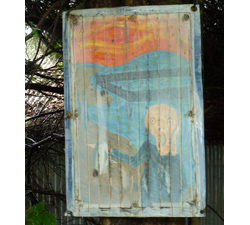 Among the frame houses and historic buildings, there is not a branded business or big-box store in sight. Sointula is very much on the modern grid, but we big-city dwellers felt we had stepped back to a time when the coast was alive with communities like this. The Cooperative Store – Western Canada’s oldest co-op, founded in 1909 – is the village hub. It’s well stocked with groceries, produce, meat and fish, magazines and newspapers, and a liquor outlet. At the Upper Crust Bakery across the street, we enjoyed coffee on the deck, savoured the view, watched the ferry arrive from Port McNeill…and learned our Finnish words of the week: “Päivää” (please) and “Kiitos” (thank you.)
Among the frame houses and historic buildings, there is not a branded business or big-box store in sight. Sointula is very much on the modern grid, but we big-city dwellers felt we had stepped back to a time when the coast was alive with communities like this. The Cooperative Store – Western Canada’s oldest co-op, founded in 1909 – is the village hub. It’s well stocked with groceries, produce, meat and fish, magazines and newspapers, and a liquor outlet. At the Upper Crust Bakery across the street, we enjoyed coffee on the deck, savoured the view, watched the ferry arrive from Port McNeill…and learned our Finnish words of the week: “Päivää” (please) and “Kiitos” (thank you.)
In the island cemetery, south of the village, the stones offer a simple record of the lives of Sointula’s founders. Many emigrated to this remote outpost at mid-life and worked hard to carve a new home out of near-wilderness. Their lives are difficult for us to imagine now, and we left the cemetery with even more respect for their history than when we entered.
Nearby Dickenson Point, known locally as “Graveyard Point,” offers more stunning views of Vancouver Island, Broughton Strait and Cormorant Channel – it’s also apparently a fine place to watch the sun rise over Johnstone Strait to the east. From here, a three-kilometre nature walk follows Kaleva Road eastward along the shore.
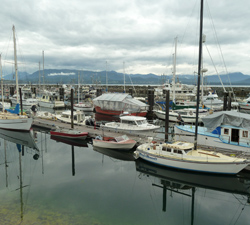 Malcolm is an island for walkers: you could ramble its quiet roads and trails for days. Other walks include the 3.2-kilometre Mateoja Heritage Trail, which leads north from the village, and the Beautiful Bay Trail, which extends five kilometres above Beautiful Bay on the north shore. Look for trail maps at the Resource Centre or the museum, both on 1st Street.
Malcolm is an island for walkers: you could ramble its quiet roads and trails for days. Other walks include the 3.2-kilometre Mateoja Heritage Trail, which leads north from the village, and the Beautiful Bay Trail, which extends five kilometres above Beautiful Bay on the north shore. Look for trail maps at the Resource Centre or the museum, both on 1st Street.
Memories
Sointula Museum, just north of the village centre, is a treat. It houses a rich trove of islanders’ memories and memorabilia: photos, memoirs, costumes, and surprising artifacts of community life and the logging and fishing industries. Look for the big 35-mm projector that once showed movies here; an antique Easthope marine engine; a hand-operated foghorn, possibly salvaged from Pulteney Point Light at the west end of the island, that wheezes when you pump it; and old charts marked with sites of successful fishing sets.
A museum volunteer reminded us that folks here have deep roots: a fourth-generation islander, he left as a young man but recently moved home. Sixth-generation residents aren’t uncommon but with the decline of logging and fishing, the population has fallen to perhaps fewer than 800 year-round residents. Sointula’s communal spirit and left-leaning politics drew newcomers over the years, especially in the ‘60s and ‘70s; many artists and artisans have also been attracted by this peaceful, inspiring place, as have seasonal residents who keep second homes here.
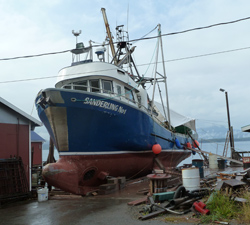 In some communities where industry and employment have faded from their heyday, it’s possible to sense discouragement and defeat. But not here. Everyone we met was unfailingly friendly, polite and welcoming. “Resilient” and “tenacious” also came to mind – qualities signified by the hard-to-translate Finnish word “Sisu” or spirit. It may be the legacy of ancestors who were used to helping each other through hard times. Or it may simply be that folks feel fortunate to live in this place, whatever its challenges, and are pleased to share it with visitors.
In some communities where industry and employment have faded from their heyday, it’s possible to sense discouragement and defeat. But not here. Everyone we met was unfailingly friendly, polite and welcoming. “Resilient” and “tenacious” also came to mind – qualities signified by the hard-to-translate Finnish word “Sisu” or spirit. It may be the legacy of ancestors who were used to helping each other through hard times. Or it may simply be that folks feel fortunate to live in this place, whatever its challenges, and are pleased to share it with visitors.
The recent revival of the Salmon Days festival may be a small sign of this resilience. A late-summer event that ran for decades but came to an end in 1983, it was revived in 2011 and immediately provided an occasion for islanders who had moved away to visit home, says organizer Myrna Williams.
“I grew up here and Salmon Days was an event we looked forward to every year. Now, it’s a reunion for people who have roots here. We’ve never had to say that – everybody related Salmon Days to the event of old and the buzz just started.”
The weekend includes a Saturday afternoon community market, a salmon barbecue, music and cabaret, a Sunday pancake breakfast and an artists’ studio tour. The festivities include recognition of Sointula’s history: a presentation last year traced the history of Salmon Days itself, and the salmon barbecue is done in traditional fashion.
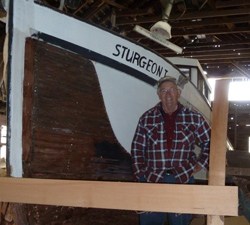 “The old Finnish guys cook the salmon dinner over an open pit in the old way. It’s quite interesting to watch them – it’s pretty unique,” says Williams.
“The old Finnish guys cook the salmon dinner over an open pit in the old way. It’s quite interesting to watch them – it’s pretty unique,” says Williams.
This year, Salmon Days takes place August 23-25 (see “If You Visit”).
Hardware and History
We finished our day with dinner at the Burger Barn – great burgers, yam fries and still more stunning views – and a walk past the old sheds and float houses at the head of Rough Bay. We planned to leave on the next morning’s flood tide, after one last stop: the Co-op Hardware near the marina. “Don’t miss it. Grab a coffee and just listen,” a friend had insisted.
As we stepped inside, we were joined by a wiry older man who strode across from one of the boat sheds. Sure enough, coffee was on and the talk started. The chart we were after was out of stock – but true to the local spirit a man at the counter offered his copy!
As we left, the man who had entered with us motioned us across the road and introduced himself. Andy Anderson is a third-generation islander and, at 73, patriarch to two more generations. Beginning about 1914, his ancestors built more than 600 boats, including 75 of the small fishing skiffs pictured in the mural on the side of the Co-op building. Now, in the same boat shed, Anderson is restoring the 1948 gillnetter Sturgeon I for display outside the museum.
The shed next door was even more eye-opening: a museum of marine engineering with a huge stock of bits from old engines and boats, including massive antique VHF radios. “What do I do with all this?” Anderson shrugged.
He told us stories of his days as a fisherman, deckhand and skipper on fish packers, including runs as a young man from Glendale Cove to Steveston that involved hair-raising night runs through Chatham Channel. He still owns a fishboat, a gillnetter he rented for years then bought a few seasons ago.
“I decided to fish it myself. That was the biggest sockeye run in a century. I almost lost my old-age security!”
We could have listened for hours and stayed another day or two, but tide and home were calling. We had seen just enough of Sointula and its people to fascinate us. We plan to return this summer and dig a little deeper into this “place of harmony.” If you’re in the neighbourhood, don’t miss a stop here.
Duart Snow is editor of Canadian Yachting West.
If You Visit
Malcolm Island Lions Harbour Authority
Moorage is first-come, first-served (no reservations, rafting encouraged) on the north or south docks, but the north dock is closer to the harbour office, showers, washrooms, laundry and the Burger Barn. Dock space is generally available, and usually plentiful in July when local fishboats are out. Water and power (20 and 30-amp) are available on the docks, and the office rents bicycles if you’d prefer to ride to the village. Harbourmaster: Lorraine Williams
250-973-6544 or milha@cablerocket.com
www.sointulaharbour.com
Sointula Resource Centre
Everything Sointula, including visitor information, maps, brochures, services, even Internet access.
250-973-2001 or sointulainfo@recn.ca
www.sointulainfo.ca
Sointula Museum
A must-see collection of photos, publications, artifacts and exhibits that trace the community’s development from a Finnish socialist commune to today’s quiet village. Open daily May-September.
www.sointulamuseum.ca
Salmon Days
August 23-25. For details: www.sointularipple.ca/announcements
Photo Captions:
Photo 1 – Wherever you turn, the views are spectacular – this is Dickenson Point.
Photo 2 & 3 – Signs of Sointula.
Photo 4 – Sointula’s public harbour offers lots of moorage for locals and transients a mile north of the village.
Photo 5 – On the hard at Tarkanen Marine Ways.
Photo 6 – Andy Anderson’s family built hundreds of boats in this shed; now he is restoring the historic gillnetter Sturgeon 1.




























